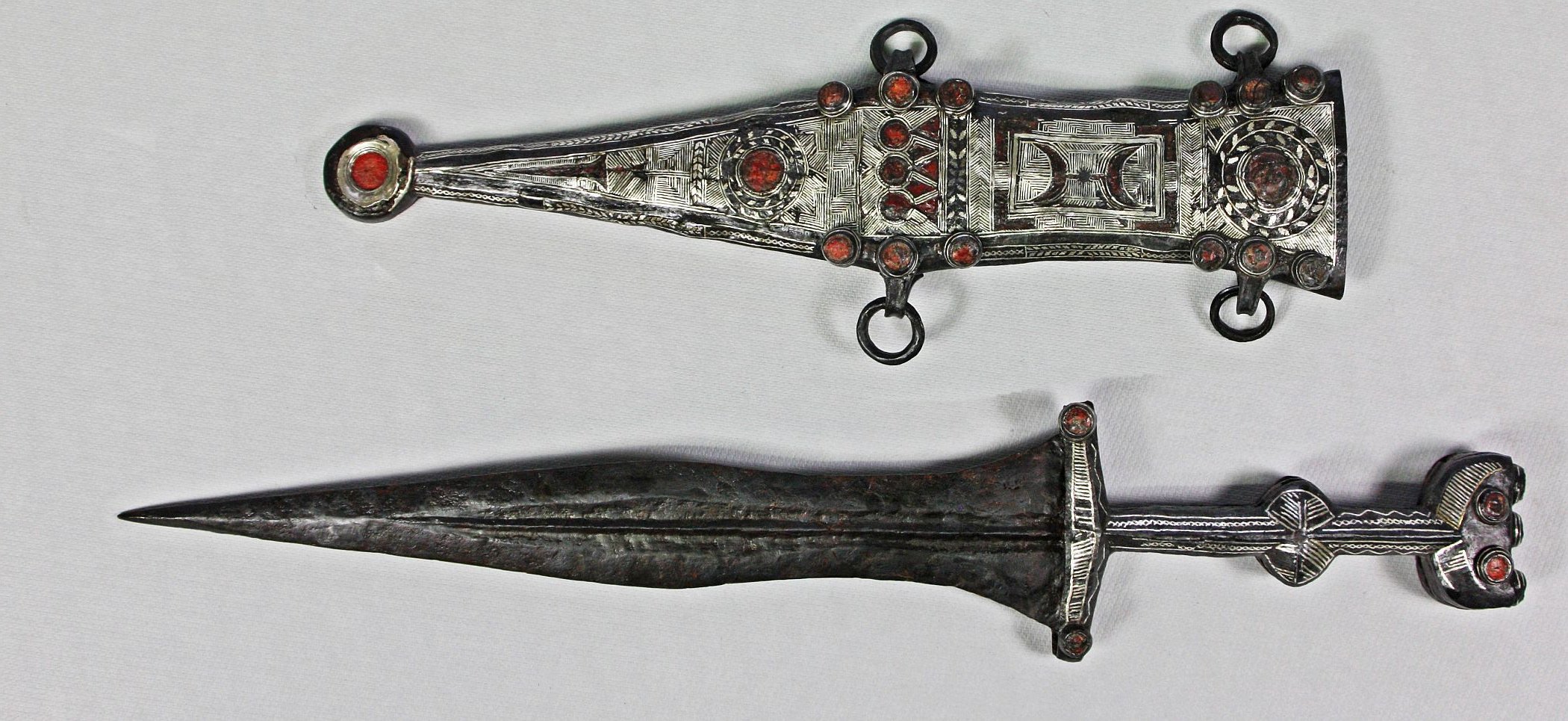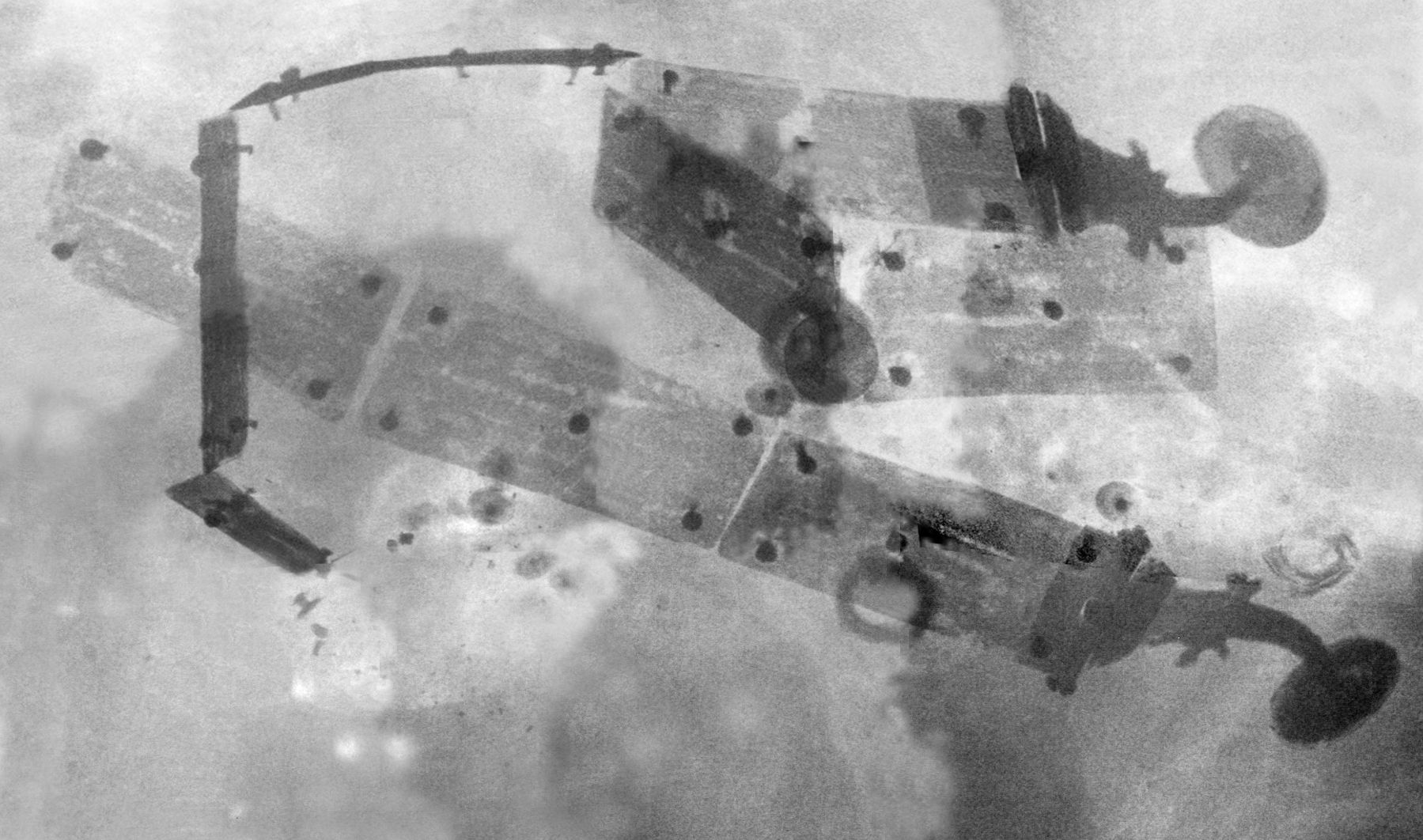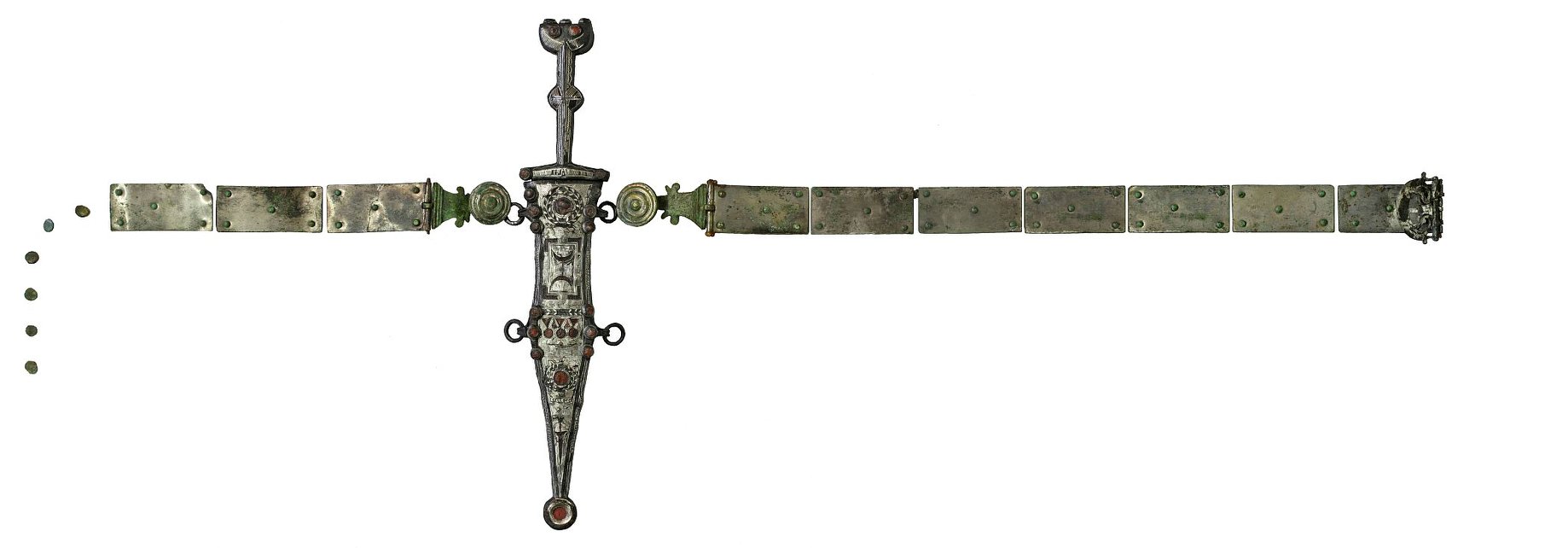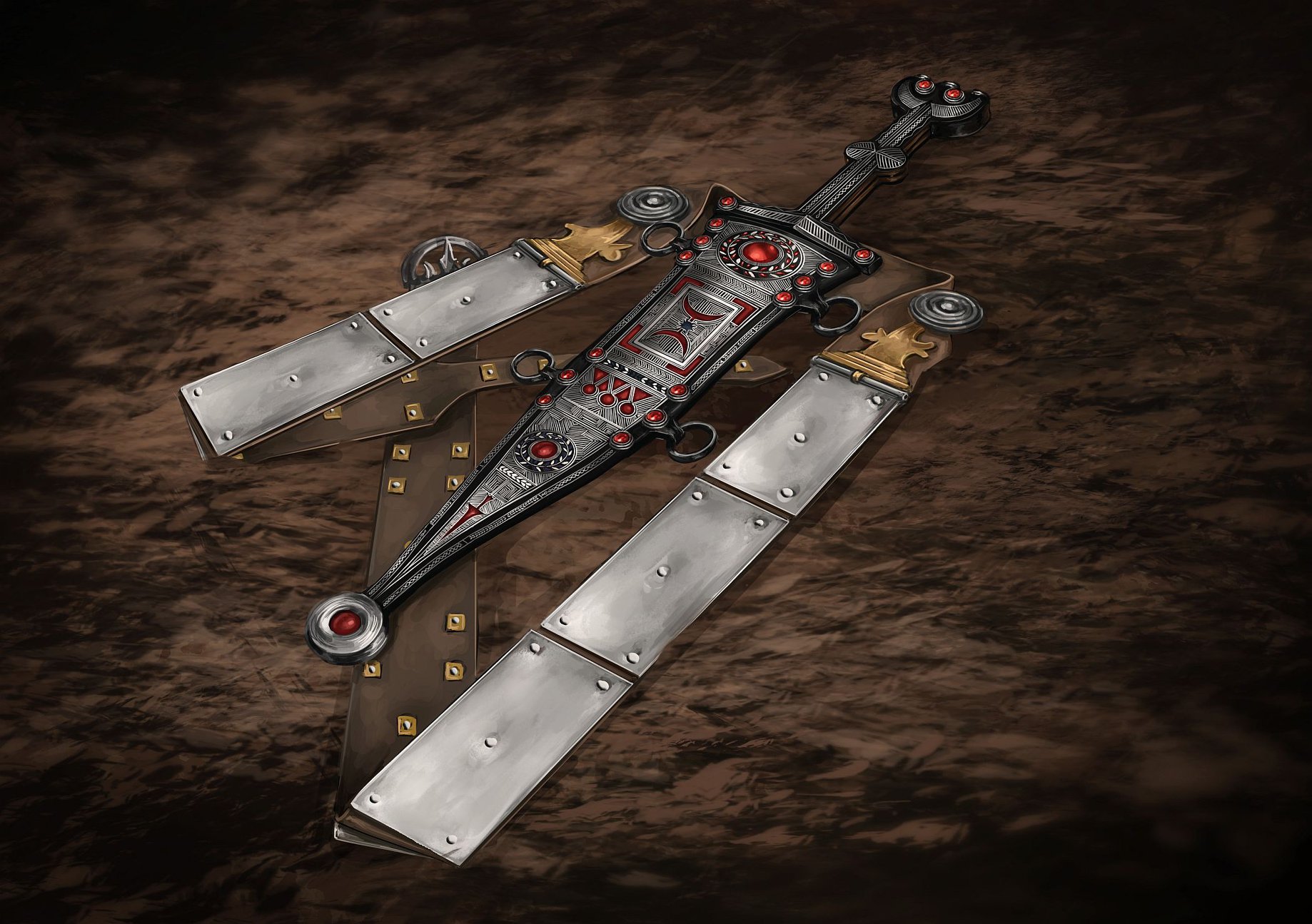








|
|
Archaeologists discover unique Roman weapon in Haltern am See (Germany)
February 12th, 2020
Haltern/Munster (lwl). In spring 2019, archaeologists from the Westfalen-Lippe Landscape Association (LWL) made two extraordinary finds in the Roman burial ground of Haltern am See: the ornate dagger of a legionnaire and the associated weapon belt. This discovery has rarity value: in Europe there is no other such well-preserved combination of this weapon with sheath and the matching belt. The ornate dagger and belt were restored after their discovery in an elaborate process in the LWL restoration workshop in Münster.
"The discovery of Roman blank weapons during archaeological excavations is always something very
special. Therefore, it was immediately clear that the dagger and its belt had to be examined and restored as much as possible. Because behind every archaeologist who digs for finds is a restorer who restores the finds in such a way that the museum people can show them," explains LWL cultural director Dr. Barbara Rüschoff-Parzinger. Thanks to the extensive restoration, the dagger and belt have almost completely regained their original appearance.

At first glance, the numerous decorations on the handle and sheath stand out, which are mainly located on the
front. These include the many silver lines and surfaces that are incorporated into the iron sheets. They result in patterns of diamonds, crescentmoons and leaves. These are so-called exchanges. In this technique, recesses were first cut or beaten into the sheets. These recesses were then laid out with fine wires and thin sheets of silver and brass. The scientists were able to prove that some silver threads were made from sheet metal strips, which were only 0.15 to 0.2 millimeters thick, turned.
In addition, the dagger has red enamel insoles and also red, real glass. Email is a mixture of different minerals that are melted into the depressions at high temperatures and result in a glass-like material.
"Of course, we can't make a 2,000-year-old object look like new," says LWL restorer Eugen Müsch. "However, the multi-coloured colour of black, silver, red and gold is largely in keeping with the former look."
For all the beauty of the weapon, Müsch emphasizes: "It is not primarily a question of creating objects of antiquarian value, but of obtaining information."
In order to obtain important clues about the construction and condition of the finds, the dagger and belt were X-rayed before the restoration and examined in a computer tomological way. Dagger in CT While conventional X-rays produce only two-dimensional images, computer tomographs map the objects in many layers that can be viewed individually.

"Using the CT images, we were able to see, for example, that the handle is composed of numerous individual components made of different materials, which are connected with eight rivet pins. In addition, the pictures provide information about the maintenance of the exchange work and the condition of the numerous enamel deposits. This information is of great importance for the subsequent restoration," says Müsch. In addition, the CT measurement showed that the blade of the dagger consists of different steels welded together in the forge fire.
The belt also consists of numerous elements. The leather was densely studded with bronze or brass plates. To give the impression of expensive silver, the metal plates were covered with tin. The belt has two hooks into which the dagger was hung with the help of leather loops. Parts of the belt leather are still preserved, which even reveal seams. Flax was used as yarn.
"Today, natural science studies and interdisciplinary work are necessary prerequisites for any research," explains Prof. Michael Rind, Director of LWL Archaeology for
Westphalia. Thus, the dagger sheath consists of a wooden core, which was designated as lime wood in the University of Cologne. The exact chemical composition of the metals and glass inserts was also analysed. Excavation in Haltern
Dagger and Belt was found in April 2019 by 19-year-old intern Nico Calmund during a joint excavation with the University of Trier in the Roman burial ground of Haltern am See.
The inhabitants of the military camp 2,000 years ago buried their dead here, mainly in urn graves surrounded by a hill. To the great surprise of the excavators, however, the two finds did not lay in the burial mound itself, but in the backfilling of a trench, which served as a perimeter of the hill. "This site is very unusual for a classic burial site," says LWL-Roman expert Dr. Bettina Tremmel. How the two objects got into the ditch is not clear archaeologically. "A random loss of the precious weapon and belt at this point seems unlikely. It is conceivable, for example, that the dagger was laid down after the burial in memory of the comrade buried here - but this is pure speculation."
There is no doubt, however, that the dagger from Haltern is one of the most important finds of its genus in
Europe. "The combination of fully preserved blade, scabbard and weir belt, including the important information about the exact location, has so far been without comparison," confirms LWL chief archaeologist Rind.
Pain-mundering restoration The restoration of the dagger and belt took three-quarters of a year.
Especially the restoration of iron in combination with other materials is complex, because the material forms thick layers of corrosion. Through a combination of grinding techniques and sandblasting, the restorer has removed these corrosion layers piece by piece. Only in this way did it regain its original surface, which in the case of the dagger was also affected by iron corrosion.
The challenge for Müsch was that these layers had minimal hardness and optical differences. At the same time, corrosion bubbles caused spatial faults, which he corrected as far as possible. "You can imagine that the original surface is on different levels - easy grinding is not possible. Considering that the silver decorations are only 0.15 to 0.3 millimeters in places, it becomes clear how careful you have to work," Müsch explains.
In the course of the restoration, Müsch succeeded in taking the dagger out of the vagina unscathed.
This procedure not only provided insights into the vaginal construction, but also offered the opportunity to assess the characteristiccurd blade with the incorporated blood gutters.
As laborious as the restoration of such finds is, it reveals many details: clear traces of use on the dagger, for
example. Already during its use some silver inserts were lost. On the front of the knob, flaws were only replaced with brass instead of silver. Especially the abrasion on the rings and hanging eyelets speaks for a longer service life.
The dagger and its weapon belt are to be exhibited at the LWL-Römermuseum in Haltern from March 2022 as part of the north Rhine-Westphalia archaeological exhibition. Under the overtheme "Rome's Flowing Borders", five museums illuminate the Lower Germanic Limes and the surrounding region.
Background and scientific classification
The weapon found is a Roman military dagger (latin: "Pugio").
The Pugio was carried by foot soldiers and used in melee combat. On the basis of the narrow blade shape and the construction, the Halterner Fund can clearly be assigned to the earliest Roman military daggers of the type "Vindonissa". A similar dagger had already been found in Haltern in 1967 - but without a vagina and belt. Weapons of this type were mainly in use in the first half of the 1st century AD. They occur in an area whose centre stretches from northern Italy to the confluence with the Rhine and also covers the southern part of the British Isles.
The restoration of the dagger, belt and background information can also be found in the film under https://www.youtube.com/watch?v=6SyckGeKDlQ&feature=youtu.be



|
|
|









